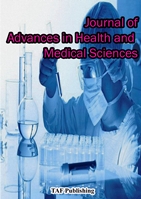
|
Published online: 2018
Abstract
Injecting drug users are the challenging segments of the population to control sexually transmitted infections. This is the first survey conducted among female injecting drug users in Pokhara Valley. To determine the prevalence of Human Immune Virus (HIV), Syphilis, Hepatitis B, and Hepatitis C infection among female injecting drug users. This study aims to evaluate the prevalence of HIV, Syphilis, Hepatitis B and Hepatitis C and also identify the sexual behavior and associated risk of HIV/AIDs infection among FIDUs in Pokhara Valley. This was a cross-sectional survey conducted among 155 female injecting drug users. The females of 16 years and above who had been injecting drugs for at least three months preceding the survey were defined as female injecting drug users and enrolled in the survey. The survey was carried out during March-April 2017. The network sampling method was applied to recruit the participants. A structured questionnaire was used to collect behavioral data related to background information and sexual and injecting behaviors. Blood samples were collected to test HIV, Syphilis, Hepatitis B, and Hepatitis C. The rapid test kits recommended by National Center for AIDS and STD Control were used to test the diseases above. The ethical approval for the study was obtained from the Ethical Review Board of Nepal Health Research Council. The prevalence of HIV among FIDUs was 1.9 percent (95% CI = 0.5, 5.9), syphilis was 3.9 percent (95% CI = 1.5, 8.6), Hepatitis B and Hepatitis C were 2.6 percent (95% CI = 0.8, 6.9) and 1.3 percent (95% CI = 0.2, 5.1) respectively. About two out of three female injecting drug users were identified with HIV during the survey, and the remaining were previously diagnosed. The new positives were linked with the National program for treatment, care, and support. Among them, three respondents have HIV; one was identified before the survey, and two were newly recognized HIV. This survey provides an insight into the estimated prevalence of HIV, Syphilis, HBV, and HCV infection among FIDUs and explores their injecting and risky sexual behaviors. A large proportion of FIDUs is at risk of HIV as they have used needles that were already used, shared syringe with the usual sexual partner, and shared needle during the last injection. Harm reduction programs, including the risk of needle sharing behavior and advocacy on practicing safer injecting behaviors, should be launched. |